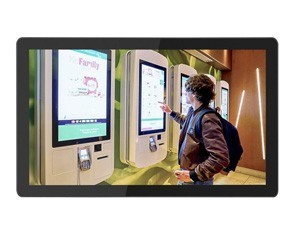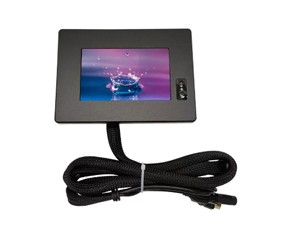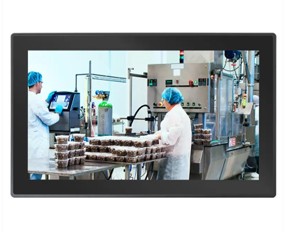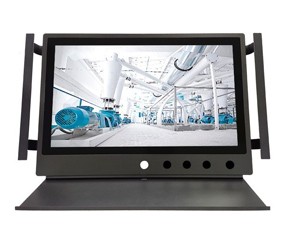Sep. 30, 2024
In today's fast-paced industrial environments, having reliable and efficient touch monitors is crucial for operational success. Whether you're in manufacturing, logistics, or any other industrial sector, the right touch monitor can significantly enhance productivity. This buying guide covers key considerations, features, and specifications to help you choose the best industrial touch monitor for your needs.
Industrial touch monitors are specially designed to withstand harsh environments, offering durability and performance. Unlike standard touch screens, these monitors often come with rugged designs, increased brightness, and advanced touch technology, making them suitable for various industrial applications. Factors like temperature resistance, water and dust ingress protection, and vibration resistance are critical when selecting a monitor for heavy-duty use.
27 Inch Project Capacitive Touch LCD Monitor
1. **Screen Size:** Selecting the right screen size is essential for visibility and usability. From compact 10-inch monitors to larger 24-inch displays, assess the space available and user requirements to choose appropriately.
2. **Resolution:** The clarity of displayed information plays a pivotal role in user experience. Look for monitors with at least Full HD (1920x1080) resolution, which provides sharp and detailed visuals.
3. **Touch Technology:** Common touch technologies include resistive, capacitive, and infrared. Capacitive touch monitors offer better sensitivity and multitouch capabilities, while resistive monitors are known for their durability in rough environments.
4. **Durability:** Ensure the monitor can withstand the specific conditions of your environment. Look for features like IP ratings that indicate resistance to dust and water. An IP65 rating is generally considered suitable for most industrial applications.
5. **Brightness:** Higher brightness levels help maintain visibility in well-lit environments. Industrial touch monitors typically offer brightness levels ranging from 250 to 1000 cd/m².
6. **Mounting Options:** Decide on the mounting options available, whether standalone, VESA mount, or panel mount. This flexibility assists in fitting the monitor into your existing setups.
Industrial touch monitors come with a variety of connectivity options like USB, HDMI, and VGA ports. Ensure the monitor you select is compatible with existing systems and can easily integrate into your workflow. Additional features like Ethernet ports and serial connections may also be beneficial depending on your application.
Consider the operating temperature range of the monitor, especially if it will be used in extreme conditions. Monitors with wider temperature ranges (e.g., -20°C to 60°C) are typically more adaptable to unique industrial settings.
Likewise, look for resistance to mechanical shocks and vibrations, especially when monitors are used in heavy machinery. This durability ensures the longevity and uninterrupted operation of the device.
While it's tempting to choose the most cost-effective option, it's essential to assess the overall value. A high-quality industrial touch monitor should offer reliability, durability, and the features necessary to enhance your operational efficiency, justifying its cost over time.
1. **What is the typical lifespan of an industrial touch monitor?**
Most industrial touch monitors are designed for extended longevity, often lasting 5 to 10 years with proper care.
2. **Are industrial touch monitors waterproof?**
Many industrial monitors come with an IP rating that indicates their water and dust resistance levels; look for at least IP65 for good protection.
3. **Can I use a standard touch monitor in an industrial setting?**
While possible, it is not advisable due to their lack of durability and performance features suitable for harsh environments.
4. **What touch technology is best for outdoor use?**
Capacitive touch screens are generally preferred due to their responsiveness and clarity, especially in bright outdoor settings.
5. **Are there specialized mounting solutions for industrial touch monitors?**
Yes, many manufacturers offer customized mounting solutions designed for specific industrial environments and applications.
By understanding these essential factors and questions when buying an industrial touch monitor, you can make an informed decision that best suits your operational needs and environment. Take the time to research and compare options to ensure you invest in a product that enhances your productivity and efficiency.



Capacitive Vs Resistive Touch Screens: When to Choose?
Mar. 14, 2025

How to Choose Capacitive Touch Monitors
Dec. 27, 2024